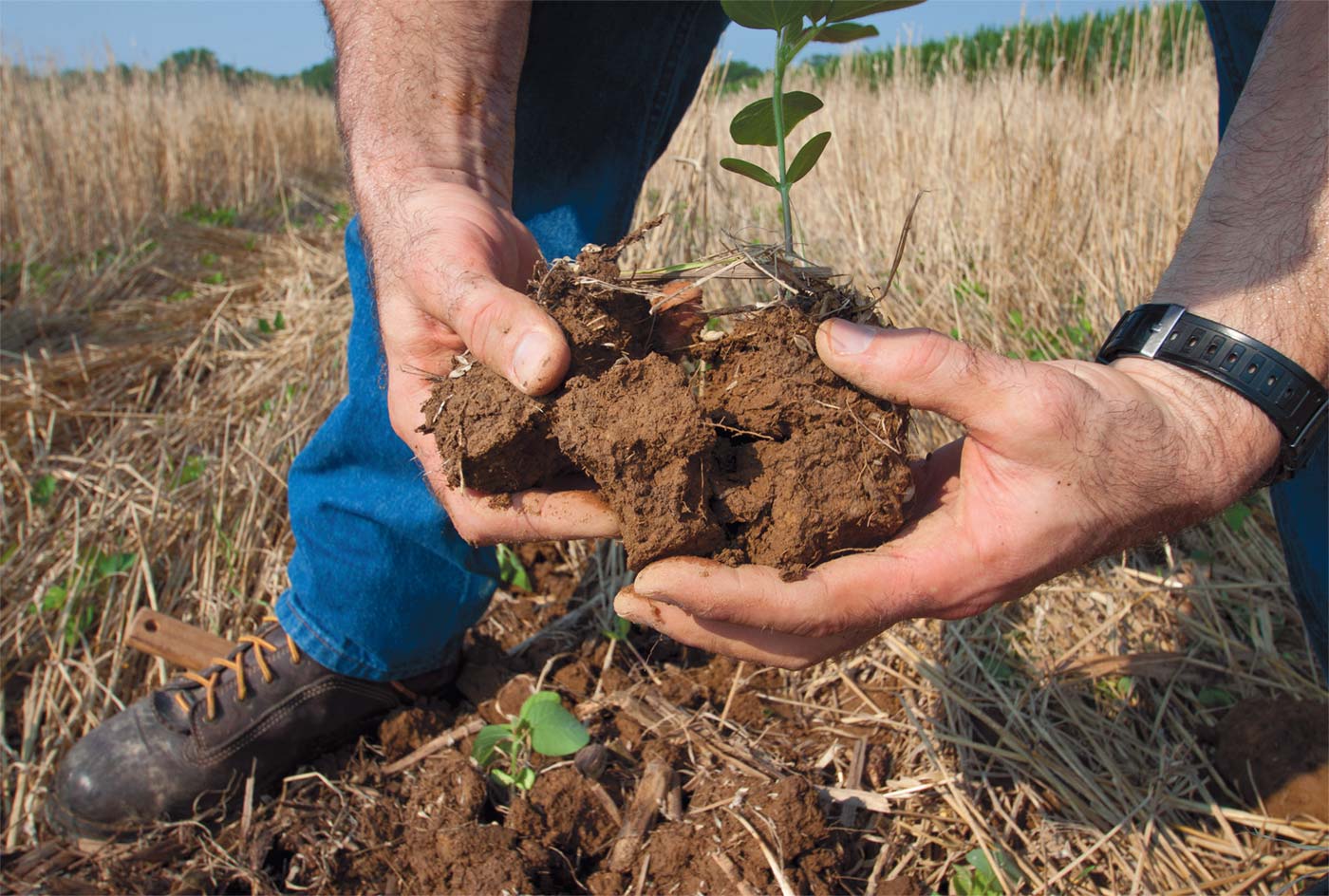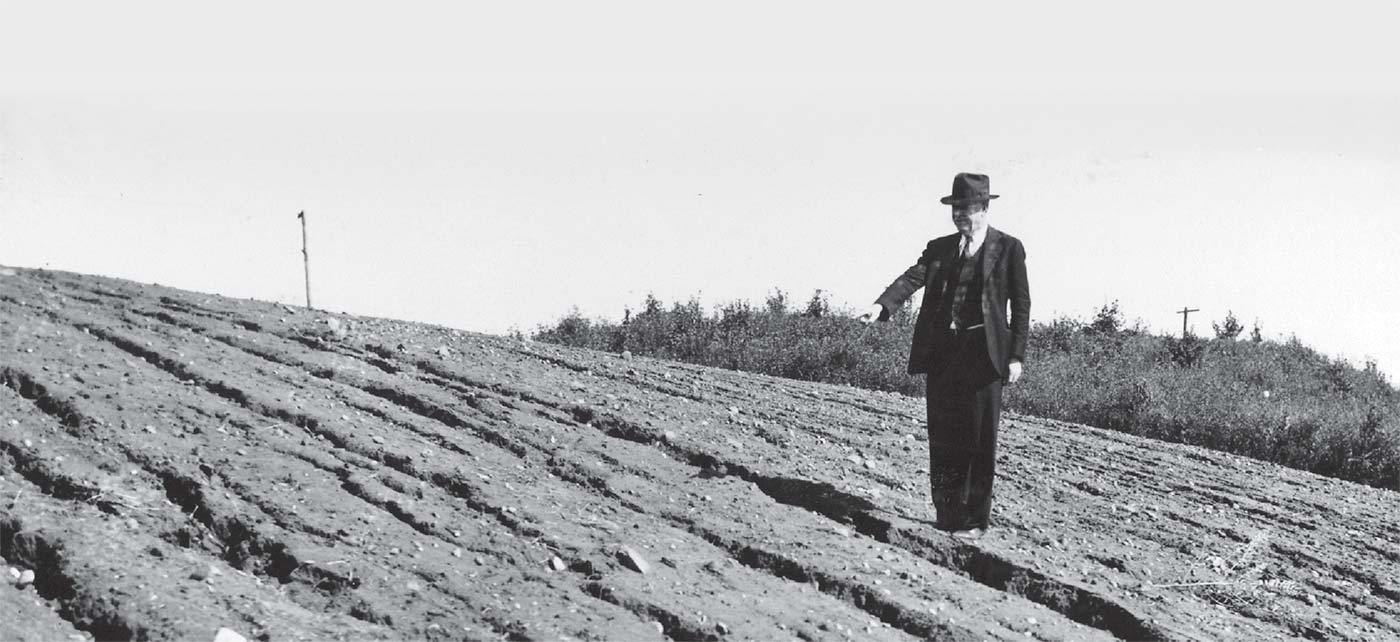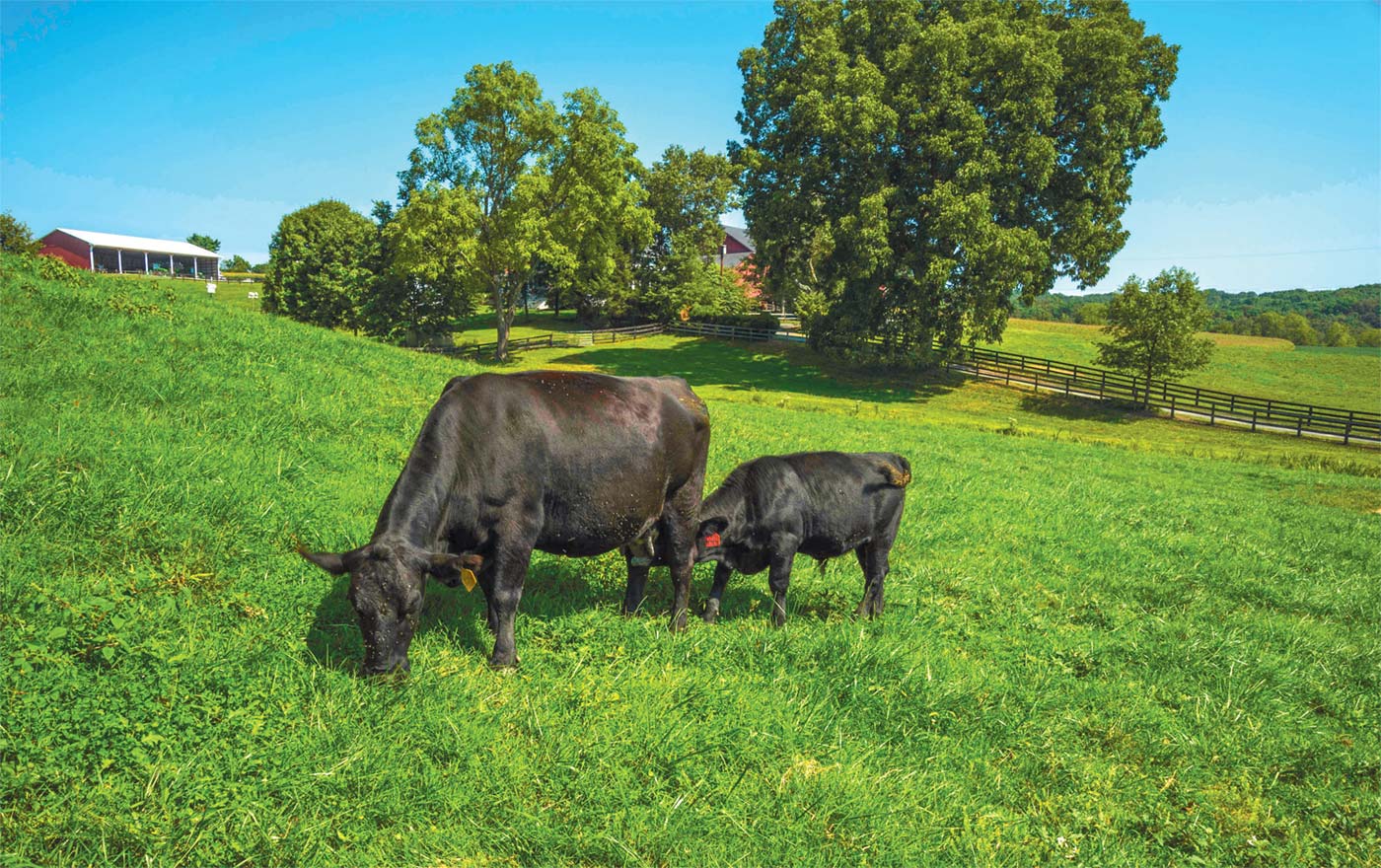Regenerative Ag Comes Full Circle At A Time We Need It Most

It’s all about the soil as USDA Natural Resources Conservation Service employee does an inspection. USDA photos
I like to fancy myself an informed individual. But, I turn the news off when I feel my gut knotting up. Sometimes it all overwhelms and becomes too much.
So, when we first were asked to shelter-in-place this March, I shut the lid to my Mac, pulled a few seed trays from storage, and planted seeds saved from years past saying a expectant prayer over them.
They didn’t amount to much this growing season as I’ve started a new garden space with soil needing much tender, loving care. But, they sure did soothe my spirit at the time.
In the wake of destruction that COVID-19 continues to cause are waves of hope for a new normal requiring a steady stream of awareness. As organic thought leader, Eliot Coleman puts it, “Giving a damn and doing what is right are rewards in themselves.”
It’s upon this notion of giving a damn that I’ve built my career and my life for that matter. So, when I learned of regenerative agriculture, a system of farming practices used for generations, “Surely some millennial trust-fund baby came up with such a name,” I scoffed.
Forgive me for the error of my ways, y’all. Valerie Dantoin set me straight.
A professor of Sustainable Food and Agriculture Systems at Northeast Wisconsin Technical College (NWTC), she and her husband, Rick Adamski, have been farming their 130-year-old, 260-acre family farm, Full Circle Farm, in Seymour for 30 years.
They retired from dairy farming about five years ago and made the intentional pivot toward grass-fed cattle. But, the end result isn’t simply about herd management. They’ve employed regenerative tenets into their agricultural practices whole-heartedly and believe in it as a system from the inside out.
“When you are regenerating you not only try to maintain the status quo but also improving it from the way you found it.”
— Valerie Dantoin
A PARTNERSHIP WITH NATURE
“Nature is bountiful and will grow with us. Plants want to ally with us,” Dantoin said. And, even though she is a cattle farmer, she insisted we should eat less meat.
With goals of improving soil conditions, increasing food production and income, regenerative agriculture is a system as Dantoin emphasized: “All of the puzzle pieces have to work together. When you are regenerating, you not only try to maintain the status quo but also improving it from the way you found it.”
She explained that those who use these methods to build the soil, improve the organic matter and lessen the runoff inevitably lessen the impact agriculture has on the land. In a piece entitled “Hands in the Dirt, Wisconsin Academy of Sciences, Arts & Letters Executive Director Jane Elder writes, “It turns out that, for all of its efficiencies, modern agriculture isn’t particularly efficient when it comes to conserving and sustaining healthy soils. Yes, we’ve come a long way from the Dust Bowl era; in fact, Wisconsin led the way with innovations such as contour cropping. However, most farming relies on plowing and tilling that loosens top soils for planting new crops which makes these soils vulnerable to gushing rainstorms and strong winds.
“Conventional farming also depends heavily on industrial fertilizers and pesticides that can compromise the soil microbiome – the ecosystem of tiny organisms that cycle nutrients, hold moisture and store carbon,” she goes on. “In the Midwest, we’ve lost nearly half the soil that was here when the sodbusters first broke up the prairies, and we’re still losing soil every season.”
On a large scale such as Full Circle Farm, managed grazing is key to the system. You’ll see very little corn and soy here, instead a green oasis in the midst of commodity crops as far as the eye can see.
“We’re not necessarily feeding the plants, but rather the soil,” said Dantoin. Dantoin keeps their pastures covered all year with green crops such as clover and perennial grasses, otherwise known as green manure. She insisted that green manure, or livestock as she referred to it, is imperative to the system as the manure helps regenerate the soil. She pointed to hay as a soil-building crop, but said, “I think as a matter of public policy, it should be illegal for corn-soy-corn to be planted for more than four years in a row. The tillage is what beats up the soil, even though the plants also do a number on it.”
Teaching these principles at NWTC, Dantoin didn’t know what to expect when everything went online because of shelter-in-place measures, yet had already put plans in motion to go national prior to the pandemic. She offered a free online course in organic vegetable gardening for beginners that wasn’t advertised beyond Facebook ads, yet garnered 400 enrollments.
“This speaks to what COVID-19 did for people’s awareness that they can raise their own food,” she said.
Only after a two-year struggle to reach 20 subscriptions, she produces for a cooperative meat CSA (Community Supported Agriculture) which is now 80 members strong and at capacity since the pandemic.
“The virus has messed with the supply chain to the point that people realize its fragile. If we want a more robust chain, we need to look at a more local level,” Dantoin said.
The farm has expanded into diverse vegetable production by her son, Andrew. You can meet the family of farmers at the Downtown Green Bay Farmers Market where they sell their organic products.
Dantoin is part of the market’s farm inspection team and said there isn’t really a specific regenerative designation to be on the lookout for, but most often if you see the USDA-certified organic seal on the farmer’s booth you are good to go. Though she said, “Rather than be the farmer market police, the consumer should be responsible for asking those questions.”

Hugh Hammond Bennett is considered the father of the U.S. Soil Conservation Service, the predecessor to the Natural Resources Conservation Service. He’s shown here inspecting some serious water erosion. USDA photo
GET YOUR HANDS DIRTY
Dantoin also teaches classes at the Sturgeon Bay Assessment and Test Center. But, she explained, it’s fairly simple to get started as a backyard gardener. Though, she said, “You can’t be lazy and be regenerative. Getting your hands dirty is part of the pleasure.”
If you’re into immediate gratification, raised beds are suggested. If you want to turn a lawn into a garden, she recommended cutting the sod with a shovel and flip the tops over, which will be your green manure. Give it a week or two and then flip it again. Then start adding lawn clippings, leaves, and other soil building materials. I’m now working on some of the tips Dantoin shared to improve that new garden space of mine.
“Start with something small that you can chew,” she explained. “Feed the soil. Learn how to compost, because that’s how you’re going to learn about bacteria. Organic matter is a spongy reservoir in the soil that holds nutrients and moisture. It makes the soil resilient to hold nutrients, some of which are slippery.”
As the world continues searching for new normalcy, of course, you’ll need to feed your body, but don’t forget your mind and spirit. “We can discover such civilized eating again,” said Eliot Coleman.
Southern scientist and inventor George Washington Carver first promoted something he called the “Victory Garden” as a way to boost civil morale and relieve pressure on the public food supply during World War II. This method of feeding an entire family flourished beyond American borders with a sense of self-empowerment. If we’ve learned anything in the most recent months, history indeed repeats itself. Our world, perhaps, will need to learn to feed itself again to truly “flatten the curve” beyond pandemic proportions and realize the joys life offers. Love on, y’all.





